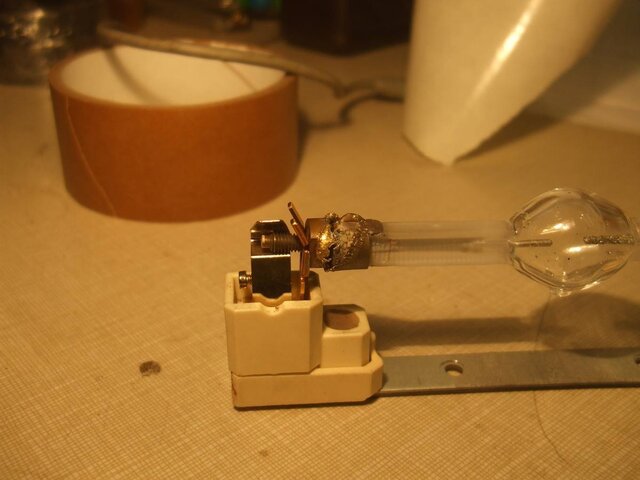Spare lamp that was installed into the new
base left the building back in September, the lamp was changed this month somewhere in the US while out on tour. Never got back the origional lamp for the
fixture that left with the tour in that
fixture so I cannot say much.
Nor do I have access to the
fixture or what replacement parts were sent out for it. Moving Lights/electronics repair department and my lamp
tracking programs don't talk with each other. We get along and help each other but totally different departments and fiefdoms as it were with seperate computer programs for
tracking stuff.
In other words, no idea of what happened to the
fixture, I buy the bases and lamps and supervise them but after that, totally different part of the company all else.
In the past year I just started
tracking bases with lamps as best I could and when I get that box for a change marked or the
base back with the lamp, other than that impossible at this
point yet to link up what's repaired with the lamps. Totally different worlds within one company but good question I also asked given the stated lamp hours.
On the other
hand look at the electrodes. They lack a sufficient buildup of bubbles on the tips of the electrodes to support 400+ hours - this even with a
voltage problem.. With a
voltage problem there will still have been some buildup even if blackened, or micro crack (not evidenced) the
bubble buildup will have been stolen away in still leaving behind a blackening of the electrodes. I can normally tell within a hundred hours or so the lamp's age if under 800 hours, these electrodes have not been in use long if at all. The bad side lacks bubbles, the other side has about as many silver bubbles on it as a new lamp.
Lack of bubbles on the same side of this melting probably means the arc as long as it was sustained ran
thru the
reflector or some part of the frame to
ground as you said and not
thru the higher resistance
lampholder for as long as it lasted. Even the bent screw thread doesn't look like it had much heat damage. Just kind of bent. Thinking your origional concept is correct the more I think about it as to what happened here.



